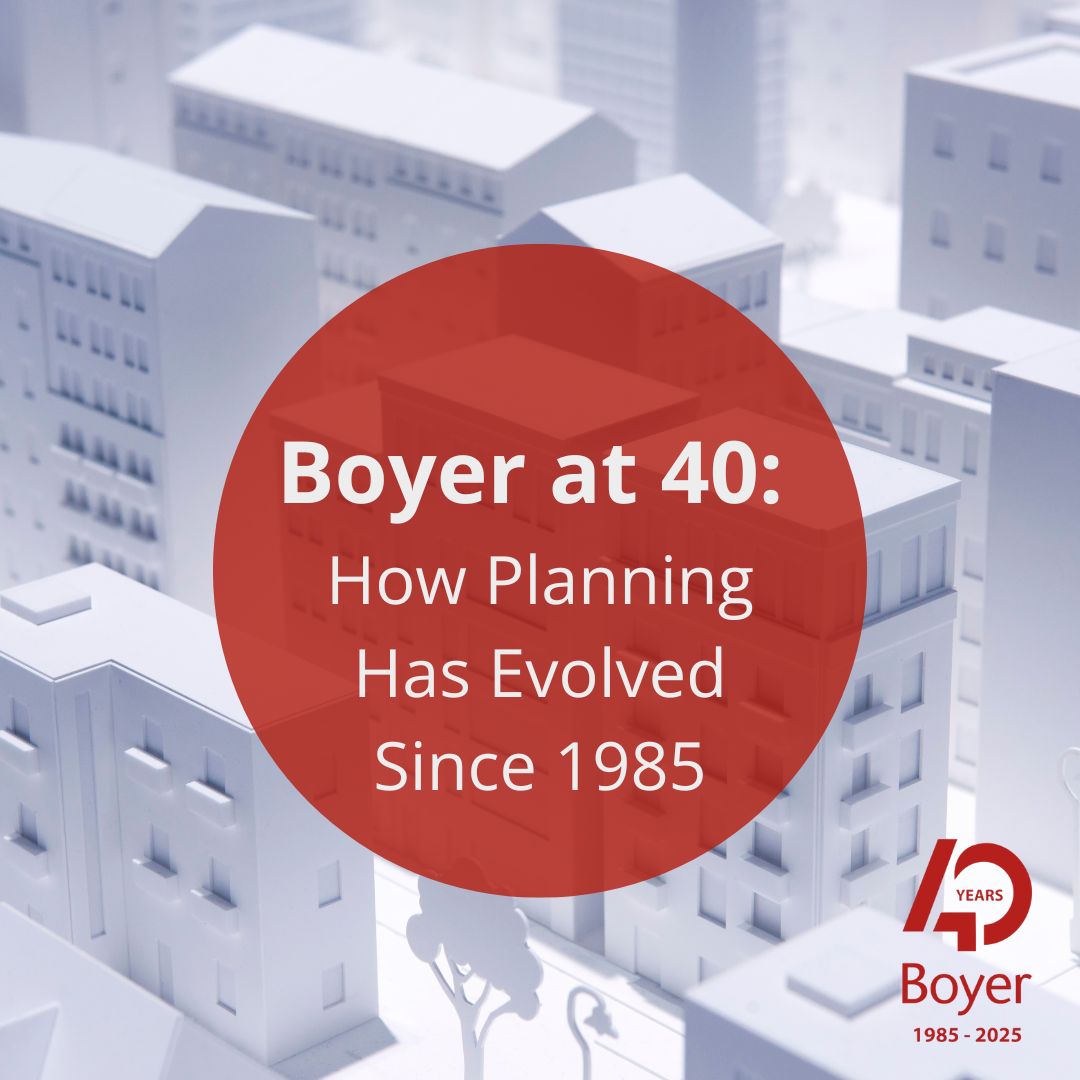Boyer at 40: How Planning Has Evolved Since 1985
Over the last 40 years, the UK planning system has undergone significant transformation. From changing policy frameworks to evolving public attitudes and technological advances, planning today is a very different profession from the one we entered in 1985.

Over the last 40 years, the UK planning system has undergone significant transformation. From changing policy frameworks to evolving public attitudes and technological advances, planning today is a very different profession from the one we entered in 1985.
At Boyer, we’ve not only adapted to these changes—we’ve helped shape them. Here, we reflect on some of the most significant ways planning has evolved over the past four decades and what it means for the future.
A Shift Toward Sustainable Development
In 1985, planning decisions were often focused on managing land use and accommodating growth. The concept of sustainability—social, environmental and economic—was in its infancy. Fast forward to today, and sustainable development sits at the heart of planning policy, from the National Planning Policy Framework (NPPF) to local plans.
This evolution has redefined what success looks like in planning. It’s no longer just about delivering homes or commercial space, but about creating inclusive, resilient, and climate-conscious communities. Boyer has responded by embedding sustainability considerations into everything we do, from site assessments to design proposals.
The Rise (and Rise) of Housing Pressure
The UK housing crisis has deepened considerably since the 1980s. A shortage of supply, rising affordability issues, and increasing demand have made housing delivery one of the biggest challenges facing planners today.
In response, planning policy has become more proactive, placing greater emphasis on deliverability, five-year housing land supply, and density optimisation. Over the decades, Boyer has worked with clients to navigate this changing landscape—promoting sites, unlocking stalled developments, and engaging with local authorities to deliver much-needed homes across all tenures.
Digital Tools and Data-Driven Planning
In 1985, planning was largely analogue. Consultation meant letters and public meetings. Today, the profession is digital-first. GIS mapping, 3D modelling, online engagement tools and data analytics have transformed how planners assess sites, consult stakeholders and communicate with clients.
At Boyer, we’ve embraced digital transformation. It has allowed us to bring more transparency and efficiency to our work, to visualise development impact more clearly, and to better engage with communities and decision-makers alike.
Greater Collaboration Across Disciplines
Planning has always been multi-disciplinary—but never more so than today. From urban designers and environmental consultants to transport specialists and economists, modern planning demands deep collaboration.
This shift has influenced how we’ve structured our own services at Boyer. By integrating planning, design, and environmental expertise under one roof, we’re able to provide holistic support that aligns with the needs of today’s complex developments.
An Evolving Role in Society
Perhaps most significantly, the role of planning itself has changed. Once seen primarily as a regulatory function, it is now increasingly recognised as a strategic tool for tackling national and local priorities—from climate resilience to health and wellbeing, economic growth to social equity.
At Boyer, we believe planners have a responsibility to lead this conversation. That means staying informed, staying engaged, and helping to shape a planning system that’s fit for the future.
Looking Ahead
While much has changed in the last 40 years, one thing remains constant: the need for expert, creative, and forward-thinking planning advice. As we celebrate Boyer’s 40th anniversary, we remain committed to supporting our clients, communities and colleagues in building places that work—today, and tomorrow.
